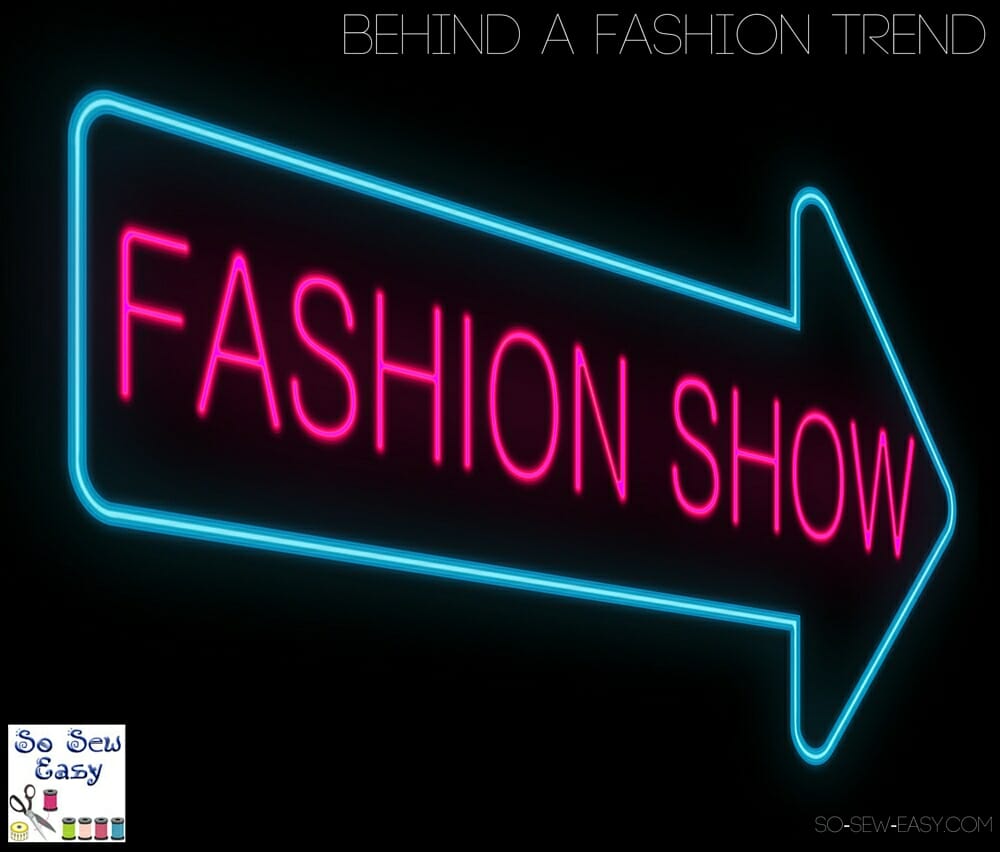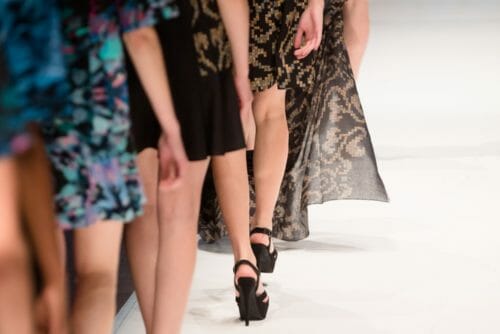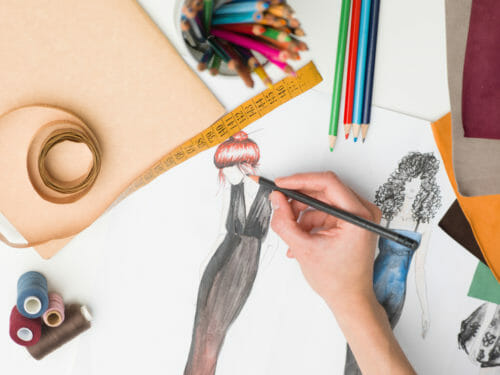
I dare say that the dress you are planning to sew for your next project is dictated by a fashion trend, which influences the way we look more than any of us can even start to imagine. Any fashion trend reflects the society we live in, as it is inspired by our arts, beliefs, customs, laws, wars and even by how some individuals dress up. As such, fashion changes as our lifestyle evolves because it has to fit our evolving taste and our changing society.
Nowadays, a fashion cycle begins when fashion designers create a new style for the season and come up with their new collection, which is then introduced to the public through fashion shows and design centers. It's also common practice to let celebrities, considered as fashion icons, wear the new dresses for maximum exposure. Produced only in small quantities, they are quite expensive and are thus only affordable to the rich and famous. We've all heard of how, before the Oscars, designers compete by inviting the hottest celebrities to wear their latest designs.
If the new design gets the attention of the press and in turn, the general public, fashion designers usually create a line that is priced more reasonably so that they can sell their designs in bigger volumes. They may have the design manufactured by using cheaper fabrics or they may alter the design a bit by adding less detail. In this way, the dress is now ready for mass production and can be sold at an affordable price.


The aim here is for the new design to get mass acceptance and as this unravels, we probably have a new fashion trend starting in our midst. It's been found out that consumers mostly buy clothes that are considered mainstream so that when a new design becomes popular, other manufacturers tend to replicate it or produce variations, which they can sell at different price ranges. If the popularity of the new design is short-lived, it is considered a fad. A design that remains popular for a considerable period of time is considered a classic.
A study on the fashion cycle has proven that, after a peak in popularity, new designs usually go on a decline. This is when consumers begin looking for the next new thing. Also, with fashion designers launching their new collections every season, the designs of the last season naturally fall fast out of fashion. You will know that a certain design is old-fashioned when retail stores put them on sale…and as soon as consumers discard a design and embrace a new one, a fashion cycle has ended while a new one has begun.


The length of a fashion cycle, however, does not follow a specific time period, it all depends on the practicality of the fashion itself. There are also designs that spark a fashion movement, as influenced by social and economic factors, the invention of a new fabric or how the design is being marketed. Fashion movements tend to last for a longer period of time.
As consumers, we are bombarded every season by a number of new designs that are created by fashion designers and launched by clothing brands. While some styles are rejected, some styles are accepted and they either become fads or classics. Next time you take on a new dress project, you should be aware of whether you are following a fashion trend or sticking to a good old classic design.
Just for fun, you can try to predict the next fashion trend? Please leave your thoughts in the comments below. I'd love to hear your thoughts.








I think that it’s important to include that forecasters predict color pallets and moods before designers even go to market to buy their collection fabrics or sit down at the drawing board. The moods might be romantic or utilitarian or outdoorsy. These moods combined with predicted popular color pallets lend them selves to particular looks and influence design. That’s why many designers tend to use the same colors in their fabrics and have similar elements in their designs.
I wear what complements my figure regarding style, color/pattern. I try to stick with pieces that would be called “classics”. However when new fashion styles come out that do complement my figure & are reasonably “classic” I will wear them as well. I have always gotten complements on my wardrobe which I really appreciate!!
Classics are easy to spot. They are the ones that look good and wear well (meaning that they are comfortable and can be used for many purposes.) Tailored suits, button up shirts, trench coats, shell (usually sleeveless shirt under jacket), knee length skirt, pumps, little black dress and slacks – things that have been around since the 50s and only have been altered slightly (wider, narrower) according to current trends.
Fads;, WIDE shoulderpads, bellbottoms, parachute pants, upturned collars on polo shirts and the like, just don’t work in office settings or social gatherings where one wants to look nice. Most fads are more for the young and single than the married with kids. (Although chains on the wallets might be necessary for some families with overly curious toddlers…)
I guess cause I am older it is easier with experience, but very few classics are put out anymore. Although I have to admit, I do like yoga pants.
There are some interesting concepts in this article. Thanks sew much for sharing.